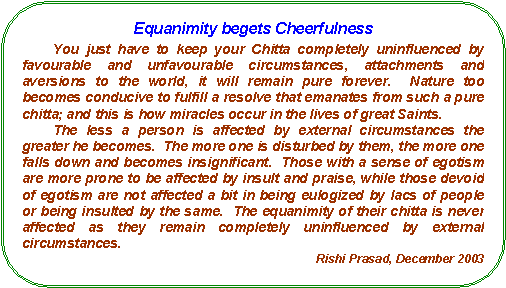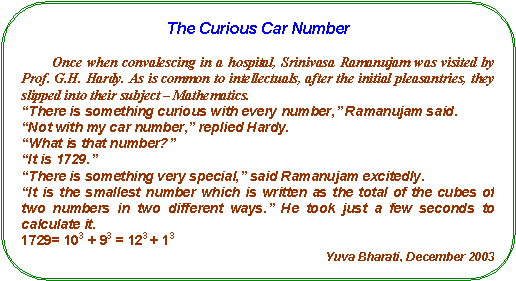|
News & Views |
|
Heat shock protein technology
ntigenics’ stated mission is to enhance and extend human lives through the development of superior health care products for a wide range of cancers, infectious diseases, and autoimmune and degenerative disorders. This company announced on July 31, 2002, the expansion of protection of its heat shock protein (HSP) technology platform with 15 recently issued US patents-five times the number issued last year. The latest patents significantly extend the company’s use of HSPs to treat cancers and infectious diseases, and bring the total number of HSP patents in Antigenic’s intellectual property portfolio to 36, all exclusively licensed to the company. The 15 recently issued patents allow Antigenics to further pursue development programs that employ their proprietary HSP technology in novel applications in an increasing number of disease areas. Applicable to both personalized and non-personalized formulations, the patents cover findings related to treatments for all stages of malignancies as well as additional methods of utilizing HSPs in off-the-shelf immunotherapeutics for infectious diseases. October 2002, Wista Vol. 4 ***** |
|
Metabolic syndrome & strokes
n ominous and increasingly common mix of obesity and other health ills, known as metabolic syndrome, which is also sometimes called Syndrome X. They have three of five common conditions: abdominal obesity, high blood sugar, high triglycerides, high blood pressure or low hdl, the good form of cholesterol. Diabetes itself significantly increases the risk of strokes. Now, new research shows that metabolic syndrome also appears to be a powerful trigger of strokes, even in people who do not yet have diabetes. During 10 years of follow-up, men with metabolic syndrome had a 78 percent greater risk of strokes than those without the combination and for women the risk was more than double. February
8, 2004 TOI
***** |
|
Walk away
from the effects of ageing
ou can recapture the fitness of
your youth with moderate endurance exercise. Here’s how to follow in the
path of the Texas study subjects who recovered their full aerobic capacity
in just six weeks, after three decades of ageing. 2003,
Reader’s Digest ***** |
|
Hormone
therapy & breast cancer
ormone replacement therapy (HRT), once described as the fountain of youth for women on the wrong side of 40, leads to a nearly four-fold risk increase in breast cancer for former victims of the disease. Former breast cancer victims may be nearly four times more likely to have the disease again if they are on HRT. The Europe-wide Million Women study showed that HRT can double the risk of developing breast cancer. The study found that, of the 174 women on HRT, breast cancer returned in 26 cases. That compared badly with a similarly-sized group not taking HRT, which had just breast cancer returning in just seven cases. A companion commentary in The Lancet, by two American researchers, said the study could reasonably be used by clinicians to decide whether or not to recommend HRT to breast cancer survivors. The comment also offered, what many believe is a near epitaph for HRT, the medication women take for the relief of menopausal symptoms, such as hot sweats. The Lancet commentary said alternative (menopause) strategies need to be developed. Leading British gynaecologists and oncologists said that HRT remained an option for women most plagued by menopausal symptoms such as hot flushes, night sweats and serious brittle bone disease osteoporosis. But the cancer risk needed to be properly explained to the patient. Dr. Richard Sullivan of Cancer Research, UK said the question of whether or not it was safe to take HRT was now unlikely ever to be definitively answered. But pharmaceutical companies pointed out that HRT had long been advised against for anyone with a history of breast cancer. February 4, 2024 TOI ***** |
|
|
***** |
|
Fatal
year
he
highest number of new HIV infections and AIDS deaths worldwide was
recorded in 2003, as per a report of the United Nations.
Five million new infections of the deadly virus and three million
deaths were recorded globally in 2003.
Sub-Saharan Africa accounted for over
three million
of the new infections and 2.3 million of the deaths. December
31, 2003 Down to Earth ***** |
|
|
Vaccine helps to prevent paralysis
pinal cord damage doesn’t stop after the initial injury. Nerve cells and fibres surrounding the damaged area begin to break down as the degenerative process spreads outward. One way to stop this, according to researchers at the Weizmann Institute of Science in Rehovot, Israel, is to administer a vaccine containing protein fragments culled from the central nervous system. The vaccine appears to stimulate parts of the Immune system that help curtail tissue-damaging Inflammation. In a recent study reported in the US Journal of Clinical Investigation, laboratory animals with spinal cord Injuries that would cause rear-limb paralysis were divided into two groups. Those that received the vaccine recovered limb movement dramatically, while untreated animals became paralysed. The vaccine won’t work in cases involving a complete break in the spinal cord, but it does appear to prevent secondary degeneration in surrounding tissues – which can be worse than the original injury. The scientists hope to test the vaccine on people within a year. 2003,
Reader’s Digest ***** |
|
|
***** |
|
|
Firm
touts moon delivery service
s
US president George W. Bush promises to expand the frontiers of space
exploration, a US firm has offered to deposit business cards or even the
ashes of loved ones on the moon. The private California–based firm, Transorbital, plans to charge 2,500 dollars for its lunar delivery service that it hopes to kick off in the last quarter of this year when it launches commercial flights to the moon. The company which says it is the only private company to be allowed by US authorities to operate commercial flights to the moon, plans to dump a small cargo of artefacts on the moon’s surface with a robotic probe. “Delivered to the moon surface in a special capsule will be your certificates, business cards, cremated remains, jewelry, artwork and many other items of choice,” the company said on its website on Thursday. “The trailblazer satellite will deliver commercial and scientific projects and experiments to lunar orbit, as well as conduct lunar exploration and mapping,” it added. The company’s president Dennis Laurie was quoted by the website space.com as saying that “thousands of people” had paid to have their mementos or dead relatives deposited on the lunar surface. “We’d like to have as many people either send things to the moon or access the satellite while it’s in orbit around the moon as possible,” he said. January 31, 2004 TOI ***** |
|
|
Designer glycoproteins from bacteria
lycosylation is a common posttranslational modification of proteins in eukaryotes and affects a wide range of protein functions. Glycoproteins are typically produced as a mixture of glycoforms. Zhang et al, have genetically incorporated b-GlcNAc-serine at a defined position into myoglobin expressed in E. coli. The introduced sugar moiety can be recognized by a saccharide binding protein, can also be used as a substrate by a galactosyltransferase. The approach should facilitate production of homogeneous glycoforms of proteins. January 16, 2024 Science Vol. 303 ***** |
|
|
Purifying river water in herbal way
C Behera says that women of his village use a novel way of purifying muddy water taken from the nearby river, which flows through the Hindol subdivision of the district.
The river water in
rainy seasons is very muddy. Behera
says that during this time the women of Jhadasandha use a wild fruit
called katak (strychnos nux-vomica) to purify the muddy water.
They rub katak on the interior surface of alumininum or brass pots
and keep the river water in them for 30 minutes to one hour.
The mud settles down completely in this much time and the water
becomes visibly clean and free of germ. March
1, 2003 Honey Bee Vol. 14 ***** |
|
|
Another stem cell success
2003,
Reader’s Digest
***** |
|
|
***** |
|
|
Salt-resistant
rice
ndian
Scientists have genetically engineered a new salt-resistant rice variety
designed to stand up to global warming. Climate
change is expected to cause rising sea levels in coastal rice-growing
areas everywhere. A team of
scientists led by Ajay Parida at the MMSSRF in Chennai has now taken a
salinity-resistance gene – which they isolated 3 years ago from a
coastal growing mangrove - and put it into several Indian rice varieties. In
greenhouse experiments, the plants have grown in water three times as
salty as seawater. Last month the government approved a field trial for
the new variety. Vibha
Dhawan, Director of Bioresources at The Energy and Resources Institute in
New Delhi, says salt-resistant food crops are needed not just in the face
of global warming but because soil salinity is a major consequence of the
intensive chemical fertilizer use and overirrigation prompted by the Green
Revolution. MSSRF estimates
that about one-third of all irrigated lands is now affected by
salinization.
January 16, 2024
Science Vol. 303 ***** |
|
|
Plastics may repair spinal injuries
he future for spinal cord injuries may be plastics – more specifically, a newly invented film that appears to transmit nerve impulses with the same lightning speed as natural nerve membranes. Researches at St. George’s Hospital Medical School in London have developed a hole-filled plastic film that allows ions of potassium and sodium to pass from one side to the other, just as ions pass through natural nerve membranes. It’s the back-and-fourth movement of ions, which changes the electrical charge on either side of the membrane, that allows impulses to travel from one end of a nerve to the other. With a thickness of 10 micrometres, the plastic film is 1,000 times thicker than natural nerve membranes – but the exchange of ions occurs just as rapidly. This means it’s theoretically possible that the film could someday replace injury-damaged nerves and permit people to regain normal function. The film has to be perfected, however. For reasons that are not clear, potassium ions pass through the tiny pores more quickly than sodium ions. Future research will focus on making the film more ‘nerve-like’, in part by fine-tuning the pores to allow different ions to pass through at similar rates. 2003,
Reader’s Digest ***** |
|
|
***** |
|
Pitting
erythrocytes
hen invaded and occupied by Plasmodium falciparum, normally pliable red blood cells become rigid and inelastic, properties that contribute to the occlusion of capillaries and the symptoms of malaria. Shelby et al. have developed a microfluidic apparatus for studying single infected red cells using molded silicon elastomer to mimic a capillary. The elastic modulus of the elastomer channels can be tuned to approximate that of blood vessel walls. Uninfected erythrocytes pass easily through synthetic capillary 2μm in diameter, but infected cells fail to enter an opening as large as 6μm. Interestingly, uninfected red cells are able to traverse the blockade by squeezing past infected cells. The authors were able to reproduce a phenomenon that occurs in the spleen, in which the bulk of an infected erythrocyte enters a 2-μm tube, leaving the parasite jammed at the entrance; the membrane ruptures, leaving the parasite behind, and the parasite-free red cell emerges out the other end. In the spleen, such “pitted” erythrocytes can then be returned to circulation. This kind of device might offer a rapid screen for agents that inhibit or reverse the biomechanical effects of malaria parasites on red cells.- CA. December 12, 2023 Science Vol. 302
***** |
|
|
Deadly
relation
nlike
conventional theory, a study of HIV-infected pregnant women has found that
co-infection with malaria significantly increases a mother’s risk of
transmitting the AIDS virus to her baby before or after during birth.
The study was conducted by researchers
from the US-based Johns Hopkins Bloomberg School of Public Health. January 15, 2004, Down to Earth ***** |
|
|
Hiding
out in hair follicles
tem
cells for mammalian skin are thought to reside in the hair follicles,
where a stem cell niche harbors its residents until the time comes to
initiate new hair growth or to regenerate skin.
Tumbar et al. develop a
strategy to highlight the slowly dividing skin cells likely to represent
such epithelial stem cells. Further analysis into the transcriptional
profile of these cells reveals suites of proteins dedicated to reading the
environment in preparation for stem cell activation. January 16, 2004 Science Vol. 303 ***** |
|
MRI
scans: coffee could skew result
ust a few cups of your favourite morning pick-me-up could upset one of the most sophisticated medical tests. Brain scans – functional magnetic resonance imaging (MRI) scans – can be used to measure the amount of blood that is circulating in different parts of the brain. Scientists at Wake Forest University School of Medicine wanted to know if caffeine, which is known to affect blood flow, could interfere with the results of the test. They gave volunteers 250mg of caffeine – roughly the amount contained in two to three cups of coffee – and then scanned their brains. They did the same after giving the volunteers dummy pills (placebos). They found that caffeine reduced blood flow by as much as 25 per cent in some areas of the brain – more than enough to significantly skew test results. In the future, patients may be advised to abstain from coffee or other caffeinated beverages before the tests, or they will be asked how much coffee they drink regularly. This will allow doctors to calculate the extent to which changes in blood flow might be attributed to caffeine. 2003,
Reader’s Digest ***** |
|
|
***** |
|
Saliva
test predicts ovulation
hand-held reusable microscope no bigger than a woman’s compact allows women to see a unique pattern in their saliva called ferning, which helps predict ovulation, enabling women to know when they may be able to conceive. The device has been cleared by the US Food and Drug Administration (FDA). Based on the rise and fall of the hormone estrogen, the ferning pattern develops in saliva around the time of ovulation and resembles frost on a windowpane. A woman puts a drop of saliva onto the device called Ovulook, lets it dry, and then looks through the eyepiece to see if the ferning pattern is there. The tester is reusable and has a replaceable round wheel with 31 small slides so users will be able to save their daily saliva patterns, creating an ovulation calendar. “We proved to the FDA’s satisfaction that the OvuLook system was 98% accurate in predicting ovulation, said Gerald Rausnitz, president of TCI Optics, an international optics firm that developed the ovulation device. Nov-Dec, 2003 Labmedica International ***** |
|
Is
there a cure in curry?
lderly villagers in India almost never suffer from Alzheimer’s disease, and their favourite spice may have something to do with it. Researchers suspect that curcumin, the compound in the spice turmeric that turns curry yellow, has properties that discourage amyloid deposits, which may cause brain impairment. Neurologists at the University of California, Los Angeles, explored that hypothesis by engineering amyloid-laden rats and putting some of them on a high curcumin diet. Sure enough, the curry-fed rats showed less amyloid accumulation than the others and did better on memory tests. If further studies on humans confirm curcumin’s protective effect, it will come as no surprise in much of India, where turmeric is a centuries-old traditional medicine. 2003,
Reader’s Digest ***** |
|
|
***** |
|
|
Common vaccines may fend off Alzheimer’s While the quest for an Alzheimer’s vaccine continues, you may already be protected by other vaccinations you’ve had. Canadian investigators examined the records of several thousand men over age 65 who had been participating for five years or more in a study of dementia. They found that the men who’d had tetanus or diphtheria shots were 59 per cent less likely to develop Alzheimer’s disease. Polio vaccinations reduced risk by 40 per cent, and even flu shots appeared to have a protective effect. The possibility that vaccinations against infectious diseases may carry an added anti-Alzheimer’s bonus is consistent with the theory that infectious agents, along with a compromised immune system, could contribute to the development of Alzheimer’s disease. 2003,
Reader’s Digest ***** |
|
|
***** |
|
|
How to combat and cool hot
flushes
ecent research shows that a diet rich in soya protein eases hot flushes while lowering cholesterol and staving off bone loss. ‘A lot of studies show that soya helps to control cardiovascular risk factors’. You need about 25g of soya each day, the amount in a third of a cup of roasted soya nuts or a soya protein beverage. Many women also turn to herbs such as dong quai, ginseng, black cohosh and liquorice root to quell menopausal symptoms. But experts say that these herbs may not be risk-free, so proceed with caution. Research published in March 2002 revealed that in test-tube studies, these herbs encouraged the growth of cancer cells. Whether they will have the same effect in humans needs further investigation. In the USA, animal studies are supplementing the work on humans. Researchers looked at the effect of hormone therapy in postmenopausal monkeys. First, they tested tissue samples from the monkey’s arteries then they put the apes on an artery-clogging diet. After three years they checked the monkeys again. Their report, presented to the annual meeting of the American College of cardiology in March 2002, revealed that while the oestrogen worked to keep arteries clear in those monkeys with the least amount of plaque, it had almost no effect on the monkeys whose arteries were clogged at the start of the study. The
study’s lead researchers Mary S. Anthony, Ph.D., assistant professor of
pathology and public health sciences, suspects that plaque blocked the
effects of oestrogen. When arteries have plaque lesions, the oestrogen
receptors don’t work as well,’ she says. ‘This would explain the
difference we’ve seen between observational studies and clinical trials.
In nearly all the observational studies the women started taking
oestrogen at menopause. In
the clinical trails, the women already had quite a lot of atherosclerosis
and were older’. Oestrogen may be able to help maintain healthy blood
vessels but may not be strong enough to take on those that are already
highly diseased and turn them back into healthy ones,’ he says. 2003,
Reader’s Digest ***** |
|
|
Hydrogen
on ice
ydrogen
molecules are formed from H atoms on interstellar dust grains in a process
that releases 4.5 electron volts of energy. Whether that energy heats the
cloud or is dissipated depends on how much of this energy becomes kinetic
energy of the H2 molecule versus released as infrared
radiation. Such dust grains
can be covered with ice mantles that are expected to be amorphous.
Hornekaer et al. (p. 1943) show that H2 formation is efficient even
at temperatures as low as 8 K and is more efficient for porous films.
Energy release also depends on film morphology.
For porous films, most of the energy is released into the films,
but for dense films, the energy is released into excitation of the
internal modes of the H2 molecules. December 12, 2003 Science Vol. 302 ***** |
|
Promising
protein boosts insulin
he British medical journal The Lancet reports that injections of an experimental protein appear to increase natural insulin production in people with Type 1 diabetes. This could decrease their need for insulin injections. The protein also might be able to prevent the disease altogether if given early to people who are at increased risk of developing diabetes. Called DiaPep277, it causes cells to release cytokines, chemicals that make the immune system less likely to damage insulin-producing cells in the pancreas. One small study found that natural insulin levels in patients given DiaPep277 rose slightly over six months, while insulin levels fell in patients given placebos. If long-term studies show the protein is safe as well as effective, it could be on the market within five years.
2003,
Reader’s Digest
|
|
|
***** |
|
No nano threat
cientists from the University College London, UK, have found that particles of the nanomaterials can lodge in the brain. Their research on rates shows that the particles can move into lungs. Humans already breathe in considerable numbers of nanoparticles present in traffic fumes, which can trigger asthma or cardiovascular problems. The particle of nanomaterials, touted as the best communication device, might trigger more severe reactions. February 15, 2004 Down to Earth ***** |
|
|
Hair-growth
hope for chemo patients
ancer patients undergoing
chemotherapy may one day be able to avoid losing their hair. Researchers
have found a way to turn on the ‘master switch’ to hair growth in mice
by injecting the animals with extra copies of a gene nicknamed ‘Sonic
Hedgehog’. The Sonic Hedgehog gene, which plays a role in the
development of the heart, brain and skeleton, appears to somehow help
guide hair follicles from their resting stage into growth activity. By
attaching the gene to a harmless version of a cold virus, scientists were
able to transport it into the skin of mice that had lost their hair
because of chemotherapy. The result – a dramatic speeding up of hair
growth two weeks later. Human trials will probably begin in the next few
years. 2003,
Reader’s Digest ***** |
|
New
clue in Parkinson’s mystery
octors have long puzzled over why levodopa, the primary drug treatment for Parkinson’s disease, is effective for only about five to ten years. Now they may have the answer. Researchers in Australia discovered that certain dopamine-producing cells in the base of the brain and in the brain’s cortex, responsible for control of movement, the five senses, memory, language, thought and intellect, are missing in Parkinson’s patients, not just inactivated or dead as earlier suspected. In fact, Associate Professor at the Prince of Wales Medical Research Institute, discovered that 80 per cent of the nerve cells in the cortex disappear during the first ten years of the disease. Levodopa, intended to help these cells transmit messages better, therefore becomes ineffective. The finding is expected to lead to new treatments for the disease – for instance, ones that stimulate other areas of the cortex to take over before the cells die out. 2003,
Reader’s Digest ***** |
|
|
Bad
blood
isease
such as leukemia result from glitches in the control of hematopoiesis, the
process that generates mature blood cells from stem cells.
The new Hematopoietic Promoter Database, or HemoPDB, from Ohio
State University gives cancer researchers information on 246 leukemia-and
lymphoma-related genes from mice and humans.
HemoPDB records the
proteins that switch each gene on and off and the DNA sequences to which
these proteins attach. Users
can also find out each gene’s function and the types of cells in which
it is active. The scientists
who assembled HemoPDB from the literature and Web sites hope it will help
researchers pinpoint other genes that might be involved in blood cell
development and disorders. January 16, 2004 Science Vol. 303 ***** |
|
|
Edible Vaccines (Antigen expression)
esearches have already shown by using GM technology that it is possible to insert certain genes encoding Hepatitis, Chlorella into certain crops thereby the inserted gene expresses the proteins that are antigenically similar to human serum. Meson et al (1992) showed that tobacco that was transformed with a gene encoding Hepatitis B surface antigen expresses this proteins in leaves in a form that was antigenically similar to human serum. In the same way Chlorella toxin B subunit (CTB) was introduced in potatoes and it was found that transgenic food plants have the ability to generate protective immunity. September,
2003, Health Action ***** |
|
|
Vegetarian
Delight
n Indian drug company has launched Asia’s first vegetarian insulin. The product may prove highly successful in India, which has the world’s largest population of diabetics. The new insulin is derived from yeast. Until now, 90 per cent of the insulin available in the Indian market was derived from pigs and cows, which are proscribed by many Muslim and Hindu communities. Wockhardt, the company that manufactures the drug, says that this type of insulin will also help avoid other infections such BSE and CJD associated with insulin derived from animals. Worckhardt has priced a 10 centilitre bottle of the insulin at Rs. 130 (nearly US $3). Other insulin products cost between US $ 5 and US $ 8 a bottle. September 15, 2003, Down to Earth ***** |
|
BACK |







